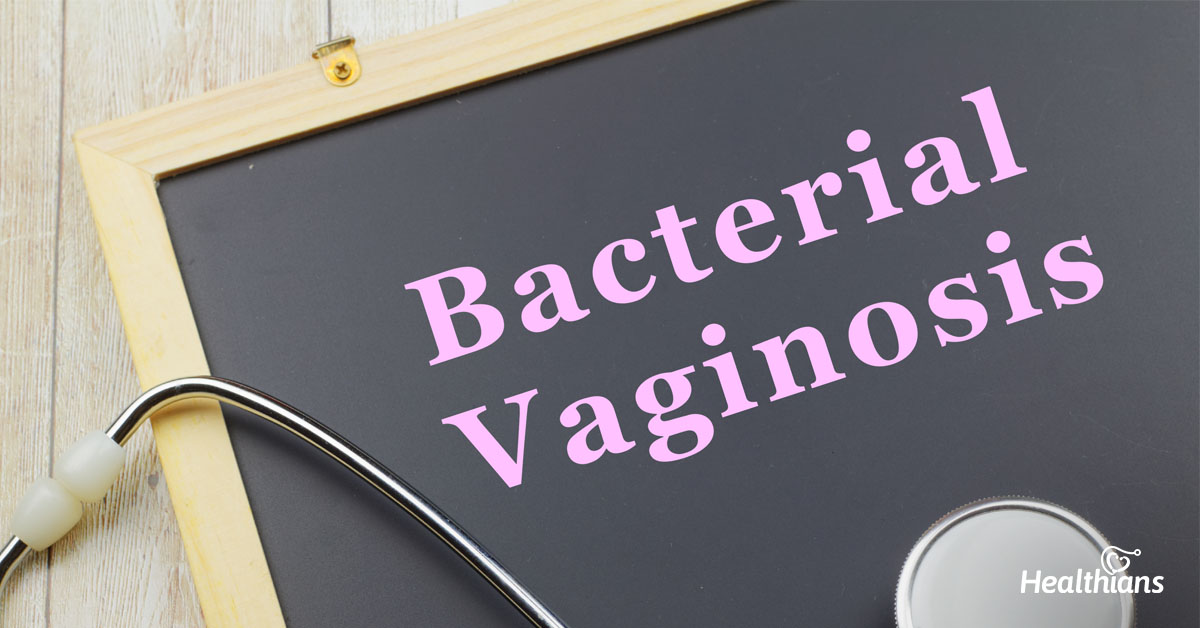Contributed by: Healthians Team
Introduction
Bacterial vaginosis (BV) is an extremely common infection among women. It happens when the careful balance of vaginal bacteria is disrupted or disturbed.
The vagina basically contains ‘good’ and ‘bad’ bacteria. In most cases, the ‘good’ bacterium outnumbers the ‘bad’. However, if there is an increase of ‘bad’ bacteria in the vagina, the natural bacterial (and acidic) balance of the vaginal environment is disrupted, resulting in BV. The ‘bad’ bacteria can be present in levels that are 100 to 1,000 times more than usual, which can throw the vaginal environment out of balance.
Untreated BV raises your chances of developing a condition known as a pelvic inflammatory disease. It can also affect fertility and increase the risk for premature delivery if you’re pregnant.
Factors that can disrupt the natural vaginal pH and trigger BV are wearing tight clothing and thongs, heavy periods, hormonal changes, the coil, and even taking baths instead of showers.
Signs and symptoms of bacterial vagniosis
BV may not necessarily show any signs or symptoms. But when it does, the symptoms can include:
- White, grey, or green vaginal discharge
- Strong, smelly vaginal odor
- Pain or burning in the vagina
- Vaginal itching
- Burning during urination
There are several myths around BV, such as the belief that it always causes infertility (it doesn’t); that frequent washing will cure it (it won’t); or that it’s a sexually transmitted disease (it’s not).
So here are the top seven myths about BV in women—busted.
Myth #1: BV is a sexually transmitted disease
Fact:
BV is not a sexually transmitted disease. However, BV can indeed be triggered if you switch partners or have several sex partners, or have unprotected sexual contact. That’s said, in this respect, the partners of women who have BV do not need to seek treatment. However, it is advisable that a woman with BV avoids sexual intercourse until complete recovery.
Myth #2: BV is caused due to poor hygiene
Fact:
Contrary to the popular myth, BV is not caused by poor hygiene. Excessive vaginal cleansing can disturb the balance of the bacteria in the vagina and contribute to the development of BV. Additionally, smoking can be an additional contributing factor. Furthermore, poor health and hot temperature can also be contributing factors. If you have experienced menopause or suffer from diabetes, the risk of having BV increases manifold.
Myth #3: It’s the same as thrush
Fact:
False. Thrush is a yeast infection while BV is a bacterial condition. It’s also twice as frequent as thrush, but just a small percentage of women are aware of it. However, because thrush is so well-known and discussed, women are much more likely to think of it when they have odd vaginal symptoms and thus more than 60% of them misdiagnose their symptoms as thrush.
Myth #4: BV affects only older women
Fact:
While women of any age can contract BV, menopausal women are at a higher risk because estrogen and progesterone, which are vital in maintaining that balance, begin to decline, allowing ‘bad’ bacteria to flourish.
Myth #5: You can avoid BV by eating acidic foods
Fact:
Although there is no evidence that the foods we eat alter our vaginal pH levels, what we eat does affect our entire body in some way. For a healthier body, both inside and out, it makes sense to eat a healthy and balanced diet.
Myth #6: You can clear the BV by washing your vulva more frequently
Fact:
This is wrong. In fact, over-washing can be a trigger – once a day is enough. Douching is also a no-no. Similarly, the use of fragrant soaps or antiseptic products should be avoided as they might disrupt the vaginal balance.
Myth #7: You have to take strong antibiotics to clear up BV
Fact:
BV sometimes resolves on its own. However, if your symptoms persist for several days without improvement, a course of antibiotics may be advised. Make an appointment with your gynecologist if your bacterial vaginosis does not reduce after a week of home treatment, or is recurrent.




